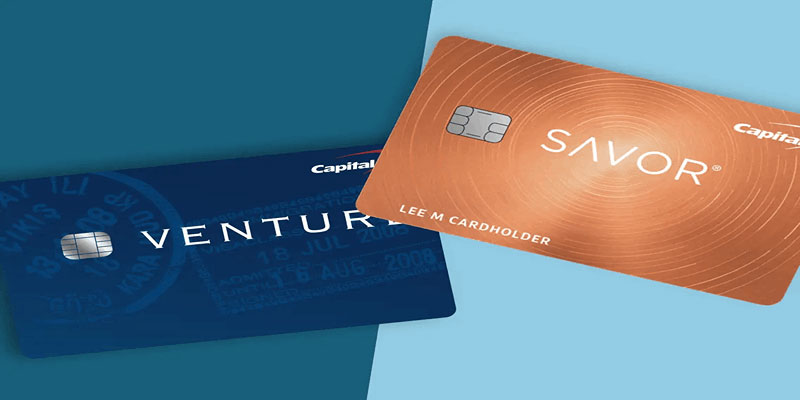Advertisement
The Ins and Outs of Revolving Credit: What You Need to Know
Aug 03, 2024 By Rick Novak
From credit cards to home equity lines of credit (HELOCs), revolving credit is a common form of borrowing that comes with several advantages and drawbacks you must know. Revolving credit can give you access to the funds you need when faced with an unexpected expense or help finance big dreams, but understanding how this type of loan works and knowing its potential pitfalls are paramount in making sure it's the right financial choice for your situation. In this blog post, we'll take an in-depth look at what's involved in revolving credit so that you can make informed decisions about whether or not it makes sense for your specific needs.
Defining Revolving Credit:
Revolving credit is a type of loan that allows you to borrow up to a predetermined limit and repay the amount in full or partially. As long as you make minimum payments on time and stay within your predefined limit, your funds are available for reuse once you've paid back what was borrowed. Most commonly, credit cards offer revolving credit but banks may also offer other types of revolving loans such as home equity lines of credit (HELOC).
How it works?
Unlike conventional loans, revolving credit does not require you to borrow a fixed amount upfront. Rather, you can borrow only what’s needed up to the predetermined limit and pay it back at your own pace over time. Depending on the specific terms of your loan, you may be required to make minimum monthly payments or have an option to repay the full balance in one lump sum.
Benefits of using Revolving Credit – Financial Flexibility and Access to Funds:

- Financial flexibility: One of the key advantages of revolving credit is that you can borrow only what you need and pay it back when it’s most convenient for you. This provides a great deal of financial flexibility as opposed to conventional loans which require borrowers to repay fixed amounts on predetermined dates.
- Access to funds: Another benefit is that once you have repaid your debt in full, you can access the funds again up to your credit limit. This makes it an ideal choice when you need access to funds for big purchases or unexpected expenses.
Differences between Revolving Credit and Other Types of Loans:
The biggest difference between revolving credit and other types of loans is the repayment terms. With a traditional loan, you borrow a fixed amount upfront and repay it in installments on predetermined dates with no option to ‘reuse’ funds after they are paid back.
On the other hand, revolving credit gives you access to funds up to your pre-set limit and allows you to borrow and repay as needed.
Interest Rates, Fees, and Charges Associated with Revolving Credit:
- Interest rates: Interest rates for revolving credit can vary significantly from one lender to the next, so it’s important to shop around and compare offers before signing on the dotted line. Keep in mind that introductory interest rates may be offered at first, but these could rise after a certain period of time.
- Fees and charges: In addition to interest charges, you may also be charged fees and other additional costs when using revolving credit. These can include annual fees, balance transfer fees, late payment fees, cash advance fees, and more. It’s important to read through the terms and conditions carefully before signing up for a loan so that you’re aware of all the potential costs associated with your loan.
Potential Drawbacks:
- High interest rates: Interest rates on revolving credit can be quite high, depending on your specific loan terms. This means that borrowing more than you need could end up costing you a great deal in the long run if it takes longer for you to pay back the debt.
- Increased risk of overspending: The ease with which you can access funds can also make it tempting to spend more than you can afford, resulting in high debt and credit card bills.
Tips for Smartly Managing Your Revolving Credit Line:

- Always make minimum payments on time: Missing a payment on revolving credit can have serious consequences, including late fees and interest rate hikes. To avoid this, be sure to pay at least the minimum amount due each month before the due date.
- Track your spending and regularly review terms: Keeping track of your purchases and expenses is essential in managing debt wisely. Make sure to also review your loan terms periodically so that you’re aware of any changes in interest rates or additional fees and charges.
- Pay off debt as soon as possible: If you have the means, try to pay off your debt as quickly as possible. This will help reduce the amount of money you have to pay in interest over time. Additionally, try to pay off the highest interest rate loans first in order to save as much money as possible.
- Take advantage of rewards programs: Many lenders offer rewards programs that allow you to earn points, miles or cash back when using your revolving credit line. Be sure to take advantage of these programs if available, as they can help offset some of the costs associated withthe loan.
Conclusion:
Revolving credit can be a great way to access funds when needed and manage debt wisely. Before signing up for a loan, it’s important to understand the pros and cons of revolving credit versus traditional loans, as well as the terms associated with the specific loan. With the right strategies in place, you can make sure that your use of revolving credit is beneficia land not detrimental to your finances.
Advertisement

Capital One SavorOne Rewards Credit Card Review

When is the Right Time to Buy a House?

Demystifying IPO Investments: How to Buy Your First IPO Stock

Why The Profit Boom Fueling Stocks Is a Mirage

The Ins and Outs of Revolving Credit: What You Need to Know

The Best Ebike (Electric Bike) Insurance

The Battle of 401(k) Providers: Charles Schwab vs Employee Fiduciary

Best Online Bookkeeping Classes

10 Steps to Becoming a Day Trader

